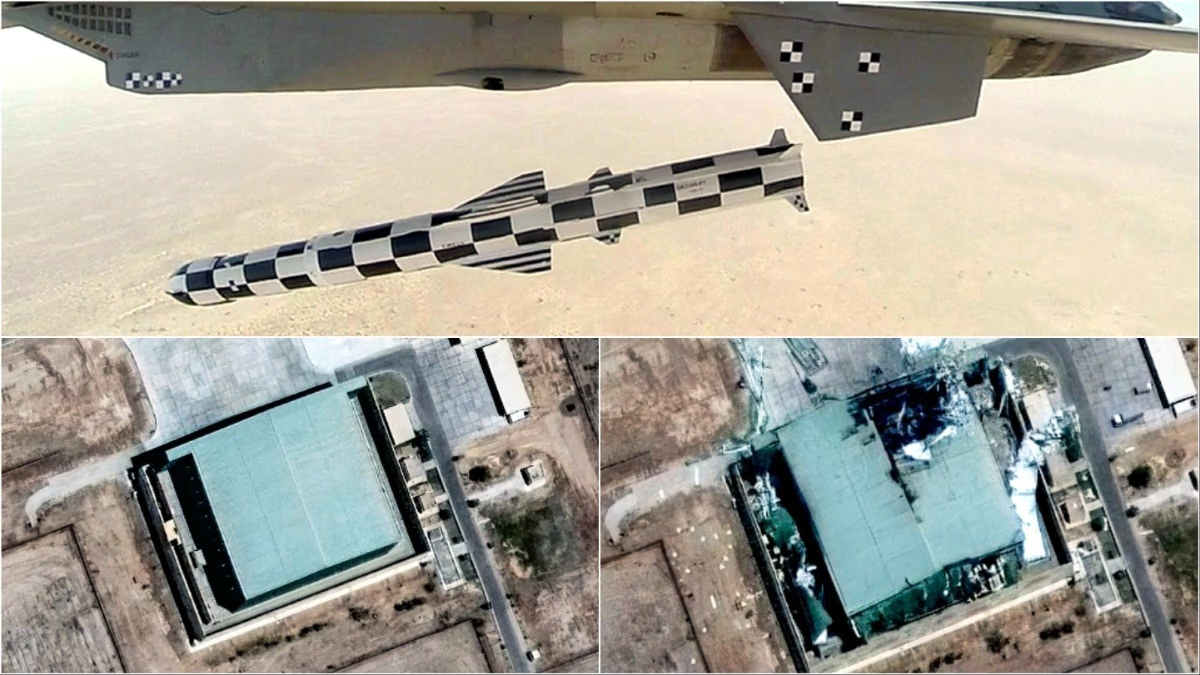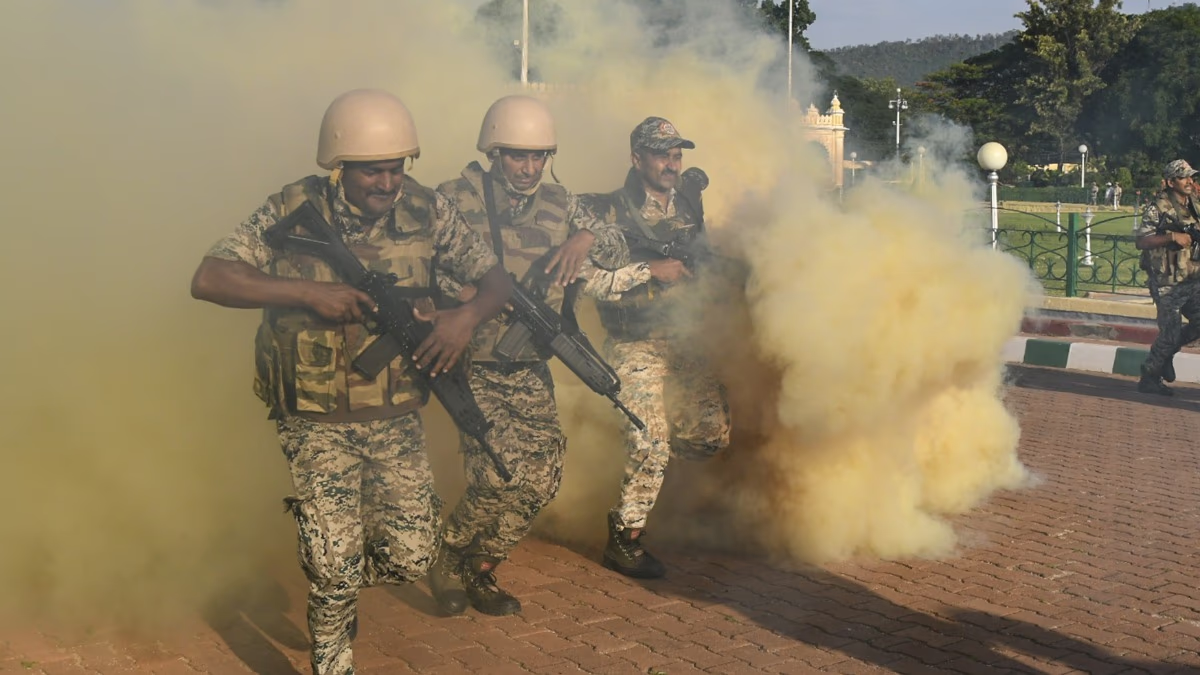In a strategic strike under Operation Sindoor on the night of May 9-10, 2025, the Indian Air Force (IAF) delivered a profound impact on Pakistan's Bholari Airbase, catching the Pakistani Air Force (PAF) off guard. The attack saw the BrahMos missile target a hangar, destroying a Saab 2000 AWACS (Airborne Warning and Control System) and 3-4 Western fighter jets, possibly including F-16s. This strike effectively crippled Pakistan's aerial defense and command systems.
Bholari Airbase Targeted
On the night of May 9-10, IAF executed a long-range BrahMos missile offensive on a specific hangar at Bholari Airbase, located near Karachi in the Jamshoro district. This base serves as a central hub for Pakistan's Southern Air Command. The hangar housed...
A Saab 2000 AWACS, crucial for Pakistan's aerial surveillance and battle management.
3-4 Western-origin fighter jets, possibly American F-16s or other advanced aircraft.
The BrahMos missile punctured a small hole in the hangar roof, causing substantial internal devastation. Satellite imagery confirmed significant structural damage to the hangar and its surrounding areas. According to India Today's sources, technical analysis of this strike is ongoing at defense headquarters.

Source: aajtak
Strategic Offensives and Decoy Utilization
The IAF displayed remarkable strategy in executing this operation...
Decoys and Deceits:
Employing dummy aircraft and loitering munitions, like the Israeli Harop drone, the IAF compelled Pakistani radars and HQ-9 air defense systems into alert mode. Upon activation, the IAF neutralized these systems.
Destruction of Radars and Missile Launchers:
The IAF obliterated key air defense missile launchers and U.S. AN/TPS-77 and Chinese radars deployed across from Punjab, Pakistan. Radar sites in Pasrur, Sialkot, and Chunian were also decimated.
Command Systems Halted:
On the night of May 9-10, the IAF effectively dismantled the Pakistani Air Force's command and control system. By the morning of May 10, Pakistan's defense network was thoroughly incapacitated.

Source: aajtak
Exclusive Use of Aerial Weaponry
In this confrontation, the IAF exclusively employed aerial armaments such as BrahMos, SCALP, HAMMER, and Crystal Maze missiles. Pakistan relied on surface-to-surface missiles and drones, which the IAF successfully thwarted using systems like S-400, Akash, and MRSAM. Notably, the Su-30 MKI and Rafale jets executed long-range strikes without crossing borders.
Unprecedented Power of the S-400
The S-400 Triumph showcased its exceptional power...
On May 8-9, the S-400 annihilated incoming Pakistani targets (drones and missiles) with relentless precision.
World Record:
The S-400 achieved the longest air-to-air missile strike by taking down a Saab 2000 AWACS at a distance of 314 km. Reports claim a secondary AWACS was obliterated at 350 km.
The mobility and A2AD (Anti-Access Area Denial) zone of the S-400 completely thwarted Pakistani offensives.
Evidence and Surveillance
The IAF possesses irrefutable proof of the strikes...
Footage from high-altitude indigenous drones capturing attacks on terrorist bases and Pakistani military sites.
Precise monitoring from tracking sensors and ISRO satellites like RISAT and Cartosat.
Satellite images from Kawa Space and Maxar Technologies confirm extensive damage at the Bholari hangar.
The IAF only issues official statements with 500% verification of its claims to ensure accuracy.
Significance of Bholari Airbase

Source: aajtak
Location:
70 km northeast of Karachi, a key Southern Air Command center.
Facilities:
Hosts advanced aircrafts like F-16s, JF-17s, and Saab 2000 AWACS. Critical for maritime surveillance and rapid deployment.
Impact of Damage
The destruction of the Saab 2000 AWACS is a severe blow to PAF's surveillance and battle management capabilities, which monitored over a 450 km radius. Losing 3-4 Western fighter jets (possibly F-16s) weakens PAF's air superiority. This significantly undermines Pakistan's defenses over Karachi and the Arabian Sea.
Background of Operation Sindoor
Launched on May 7, 2025, Operation Sindoor was in response to the April 22, 2025 Pahalgam terrorist attack (26 casualties). India attributed this to Pakistan-supported Jaish-e-Mohammed and Lashkar-e-Taiba. The IAF targeted 11 Pakistani airbases (Noor Khan, Rafiqui, Murid, Sukkur, Bholari, etc.) and terrorist facilities.
Pakistani Counter-Attack:
Over May 8-10, Pakistan launched 413 drones and 860 missile attacks, all foiled. Ceasefire brokered by the U.S. on May 10.
Damage and Impact
20% PAF Infrastructure Obliterated:
Over 50 personnel killed, including Squadron Leader Usman Yusuf. High-value aircraft like Saab 2000 AWACS and F-16s destroyed. Radars and command centers razed, crippling PAF's response capabilities.




